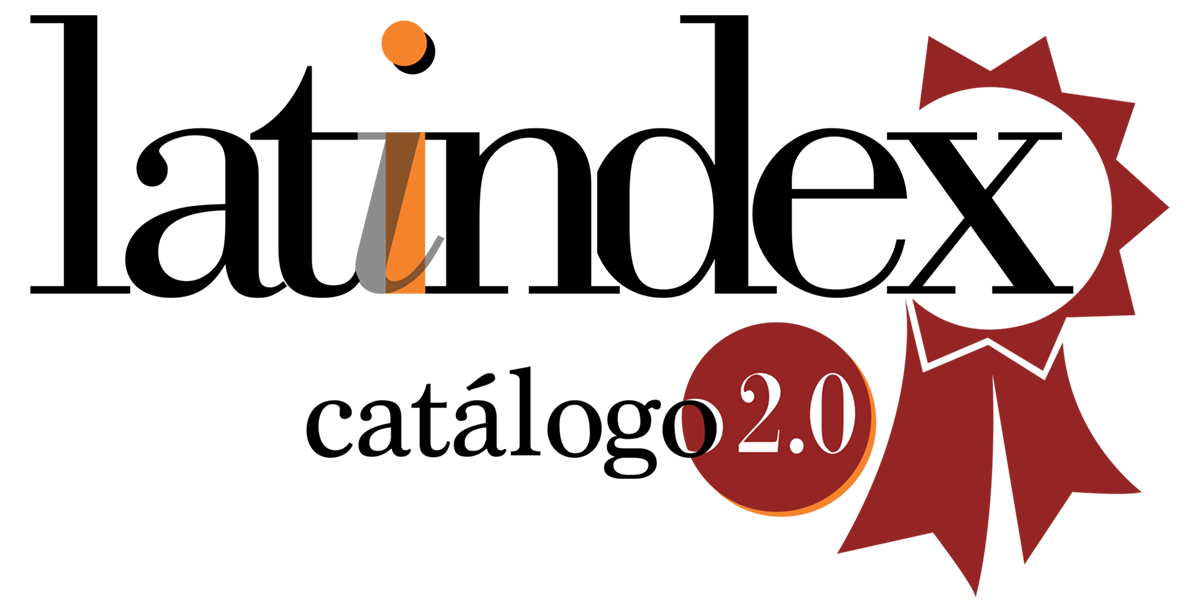Quinary numbering system, in motifs 19, 20 and 21 of sector D in Quilla Rumi, Huanuco
DOI:
https://doi.org/10.33554/riv.18.2.2159Keywords:
quinary, dog, painting, cave, squareAbstract
Quilla Rumi houses more than 200 cave paintings that have not yet been deciphered, which opens the possibility of analyzing them from a scientific approach to deepen the knowledge of the first inhabitants and their cultural identity in relation to the historical past of Huánuco. The purpose of the study was to demonstrate that motifs 19, 20 and 21 of sector D in Quilla Rumi represent the quinary numbering system of the ancient settlers of the region. A qualitative approach, documentary type and analytical-synthetic methods were used to analyze the images of the cave paintings. The analysis of these three motives revealed their interrelationships. It is concluded that motif 20, with four points and a line, represents the number five, considered as a hand in the quinary number system. The 21 motif, with a square and a central dot, also symbolizes the number five, but in a more advanced and practical way. Motif 19 represents the number 25 or five hands, and by including the head with two eyes and a nose, it could represent 28 days, the lunar cycle. Furthermore, the head of the figure is identified as that of a Peruvian dog due to its morphological characteristics.
Downloads
References
Allison, M., Aste, G., & Vargas, C. (1982). El perro precolombino en Arica, Chile. Chungara: Revista de Antropología Chilena, 8, 291–300. http://www.jstor.org/stable/27801743
Apaza, H. (2017). La yupana, material manipulativo para la educación matemática: Justicia social y el cambio educativo en niños de las comunidades quechuas alto andino del Perú [Tesis Doctoral, Universidad Autónoma de Madrid]. https://dialnet.unirioja.es/servlet/tesis?codigo=136273&info=resumen&idioma=SPA
Bizarro, W., Vilca, H., & Sucari, W. (2020). Sistema de numeración aimara: una revisión para su reconstrucción. Apuntes Universitarios, 11(1), 364–385. https://doi.org/10.17162/au.v11i1.591
De Rivero, M., & Von Tschudi, J. (1851). Antigüedades peruanas (Vol. 1). Impr. Imperial de la Corte y del Estado. https://books.google.es/books?hl=es&lr=&id=PrUCAAAAYAAJ&oi=fnd&pg=PA21&dq=Rivero+y+Tschudi+(1851)+&ots=NeijBgZyZ3&sig=kGcqBRnIcbMWZkUkLkcXrDQqlKI#v=onepage&q=Rivero%20y%20Tschudi%20(1851)&f=false
Echevarría, G. (2012). Las cuatro categorías técnico -materiales del arte rupestre peruano. Investigaciones Sociales, 16, 379–387. https://doi.org/https://doi.org/10.15381/is.v16i28.7411
España, V., & Azúa, R. (2003). Los perros de Guamán Poma de Ayala: visión actual del estudio del perro precolombino sudamericano. AMMVEPE, 14, 43-52. https://www.researchgate.net/profile/Raul-Valadez/publication/303484472_Los_perros_de_Guaman_Poma_de_Ayala
Espinoza, P. (2013). La matemática náhuatl: estudio del sistema de numeración náhuatl (Doctoral dissertation). http://repositoriodigital.ipn.mx/handle/123456789/11415
Gómez, E. (2018). Quilcas de grupos pastoriles en la microcuenca alta del río Lejiamayo-Vicos-Marcará-Áncash [Tesis de pregrado, Universidad Nacional Santiago Antúnez de Mayolo]. https://repositorio.unasam.edu.pe/handle/UNASAM/2457
Hernández, R., & Mendoza, C. (2018). Metodología de la Investigación: las rutas cuantitativa, cualitativa y mixta (1era ed.). McGRAW-HILL Interamericana Editores, S.A. de C. V.
Hutchinson, T. (1873). Two years in Peru, with exploration of its antiquities (Vol. 2). S. Low, Marston, Low & Searle. https://books.google.es/books?hl=es&lr=&id=Sov7jIjAm58C&oi=fnd&pg=IA1&dq=Hutchinson+(1873).&ots=M6KaCZ21zH&sig=FJ3CmdnnS5T-aD7g5kdLsg9r_Ts#v=onepage&q=Hutchinson%20(1873).&f=false
Inga, C. (2013). Incanäni: un complejo funerario Wamalli con indicios de arte rupestre Inca en el Alto Marañón, Huánuco-Perú. Revista Haucaypata, 33. https://d1wqtxts1xzle7.cloudfront.net/107149453/ilovepdf_merged-libre.pdf?1699125151
Jiménez, M., Sánchez, M., & Anaya, J. (2010). Las cuatro categorías técnico materiales del arte rupestre peruano. http://engukuani.colmich.edu.mx/red
López, G. (2012). Las cuatro categorías técnico-materiales del arte rupestre peruano. Investigaciones sociales, 16(28), 379-387. https://doi.org/10.15381/is.v16i28.7411
López, G. (2016). “Quilca” y “arte rupestre”, disquisiciones en el contexto del arte, la arqueología y la ciencia peruana. Arqueología y Sociedad, (31), 011-022. https://revistasinvestigacion.unmsm.edu.pe
Mejías, C., & Alsina, Á. (2021). Historical-epistemological development of algebra: its evolution toward different meanings. Mathematics, Education and Internet Journal, 21(2). https://doi.org/10.18845/rdmei.v21i2.5607
Montes, R. (2012). Teorías interpretativas del arte rupestre. Tiempo y Sociedad, 9, 5–22. https://dialnet.unirioja.es/servlet/articulo?codigo=4193609
Morales, D. & Echevarría, G. (2012). El sitio arqueológico de Quilla Rumi, Huánuco, Perú. Boletín APAR. 358-370.
https://www.academia.edu/1522090/El_sitio_arqueol%C3%B3gico_de_Quilla_Rumi_Hu%C3%A1nuco_Per%C3%BA
Núñez, Q. (2012). Arte rupestre en la cuenca del Marañón, regiones de Amazonas y Cajamarca, Perú. Investigaciones sociales, 16(28), 397-402. https://www.google.com/search?q=N%C3%BA%C3%B1ez%2C+Q.+O.+(2012).+Arte+rupestre+en+la+cuenca+del+Mara%C3%B1%C3%B3n
Onuki, Y. (1999). El periodo arcaico en Huánuco y el concepto del arcaico. Boletín de Arqueología, 3, 325-333. https://doi.org/10.18800/boletindearqueologiapucp.199901.016
Ordóñez, C. (2014). Incas, ancestros y apropiación territorial en Huánuco. http://repositorio.cultura.gob.pe/handle/CULTURA/247
Osorio, J., & Gálvez, C. (2015). El viringo, el perro sin pelo del Perú. Patrimonio nacional peruano. Revista de Arquitectura, 2, 57–82. https://www.unife.edu.pe/facultad/arquitectura/1/57.pdf
Palacios, D. (2020). El arte rupestre y la perspectiva comunicacional. Comunifé, 20(XX), 49–56. https://doi.org/10.33539/comunife.2020.n20.249
Palella S., & Martins F. (2012). Metodología de la Investigación Cuantitativa. 1era reimpresión. FEDUPEL. 279 p.
Pérez, C. (2020). Arqueología del arte rupestre de los Andes Centrales: contextos paisajísticos, culturales y temporales de las manifestaciones pintadas del valle de Nepeña, Ancash, Perú. http://hdl.handle.net/10017/42926
Pulgar, J. (2014). Las ocho regiones naturales del Perú, Terra Brasilis [Online], 3, https://doi.org/10.4000/terrabrasilis.1027
Revista Bitácora (2024). Quilla Rumi. Disponible en: https://www.bitacorarevista.com/quilla-rumi-2/
Rodríguez, M. (2006). Arte rupestre en el departamento de San Martín. https://hdl.handle.net/20.500.12672/2894
Rubina, A. (2017). Interpretación filosófica de las pinturas rupestres de la región Huánuco. Investigación Valdizana, 10(2), 65–71. https://revistas.unheval.edu.pe/index.php/riv/article/view/63
Santana, Y. & Sánchez, D. (2021). Historia y aplicación de las Matemáticas.
Sánchez, V., Tham, T., Mora, C., & Pérez, G. (2016). El origen del perro (Canis lupus familiaris) sin pelo peruano (PSPP): pruebas arqueológicas, zooarqueológicas y genéticas. Revisión. Archaeobios, (10), 80-102. https://dialnet.unirioja.es/servlet/articulo?codigo=6335551
Tun, M., & Díaz, M. (2015). Recuperar la memoria histórica y las matemáticas andinas. Revista Latinoamericana de Etnomatemática Perspectivas Socioculturales De La Educación Matemática, 8(1), 67-86. https://www.revista.etnomatematica.org/index.php/RevLatEm/article/view/164
Valcárcel, L. (1972). Tempestad en los Andes (1st ed.).
Vilca, H., Bermejo, S., & Ari, D. (2022). Los Sistemas de Numeración Aymara: cambios y Valor Formativo. Bolema: Boletim de Educação Matemática, 35, 1701-1722. https://www.scielo.br/j/bolema/a/w6Ph7FWyVxXVBcGVbQxht3r/
Viñas, R., Martínez, R., & Deciga, E. (2001). La interpretación del arte rupreste. Millars. Espai I Historia,10 (24), 199–222. https://dialnet.unirioja.es/servlet/articulo?codigo=173840
Downloads
Published
Issue
Section
License
Copyright (c) 2024 José M. Alomia-Lucero, Liana Sixto-Dávila

This work is licensed under a Creative Commons Attribution 4.0 International License.
The concepts contained in the scientific articles included in this edition are the exclusive responsibility of the authors and do not necessarily reflect the institutional criteria.
Authors will keep their copyright and guarantee the journal the right of first publication of their work, which will be simultaneously subject to the licencia de Creative Commons Atribución-No Comercial 4.0 Internacional (CC BY-NC 4.0)






























